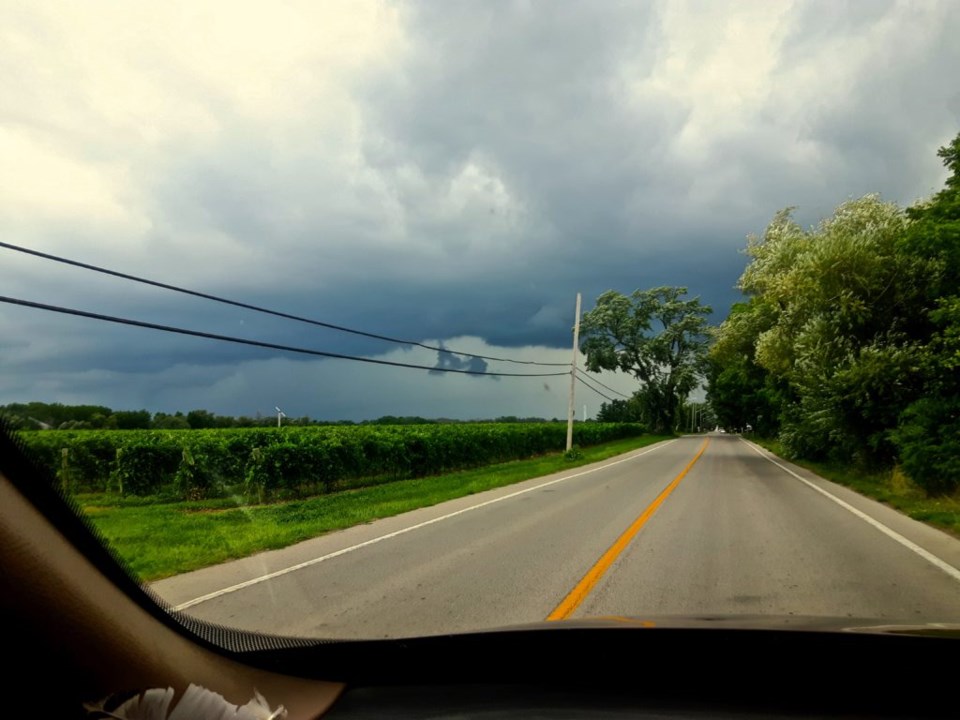
Water is the ultimate life force.
Living things require water to live, so it is basically oil to our biological machines. Our body is up to 60 per cent water by weight. Water also changes states of matter, and just over 12,000 years ago, the world where we live was ice, one kilometre thick above our heads and squishing the landscape down, albeit ready to melt and retreat.
Water has shaped landscapes in Niagara, and nowadays, it can shape outcomes to our safety if we’re not respectful of it.
Water deserves this respect. Its power is easily overlooked and deceptive, making it an appreciable danger at times. As the weather heats up in Niagara-on-the-Lake, more people will begin immersing themselves in the crisp waters of the Niagara River and Lake Ontario, either by means of a swim, or just getting out on the fishing boat or kayak. Unfortunately, the water quality of our One, Two, Four, and Eight Mile Creeks is not the most inviting.
Just because you’re at a popular water destination this summer, doesn’t mean you shouldn’t be mindful of water’s volatile potential.
Two summers ago, my friend and I launched our kayaks on a breezy, hot summer day in Port Dalhousie. The kind of mid-July day where you can just feel all the ingredients are in the air ready to cook up some big storms. The storms weren’t forecast until that evening, if at all, so we hit the water directly from the public beach. We knew and accepted there was a risk of sorts.
We pushed headlong out into the open water, with the decommissioned Port Dalhousie pier to our right well within sight. Suddenly we were giving that pier too close a look. The hot evaporative winds rushing over Lake Ontario were whipping up. They were fuelling the upcoming storms and shoving our kayaks around.
While out of the rain, we were not out of the wind. Its onset was sudden, and its power was unusually sustained. It was pushing our kayaks closer to the pier wall and its ugly boulders. My buddy and I shot each other looks with dropped jaws as we bobbed in and out of sight from each other. The waves passing between us were cresting above our heads, sometimes dumping into our kayaks.
These weren’t the conditions of five minutes ago.
We swung out around the pier tip, and out of the wind around its corner. Amazed that we hadn’t capsized, we grabbed hold of a metal emergency ladder, linked our kayaks, and hung on for a second. Hanging on was key, as the force of water pushing out from the Martindale Pond into the lake was phenomenal. We didn’t expect that current. If we let go, either we or our kayaks would be getting pushed out into the open waters of the lake again.
We clung on, as we were regrouping our thoughts and having a chuckle about that adrenaline rush. Always save time for a laugh; it can really help sometimes.
There was no way we were paddling back out into the windward side and getting smashed into the rocks. So we decided to climb up a ladder, with two kayaks, in a wind storm, onto the closed pier. Yes, it was tricky. I have no issue with this story of us being on the closed pier made public, because that mass of land really helped us out.
We successfully marched back down the pier to the parking lot, across a carpet of bird feces, all the while trying not to be blown off the structure with our kayaks acting as a sail.
In NOTL, we share the same lake and the same weather systems as Port Dalhousie next door.
Admittedly, I have an unusual desire to get outside when the elements are a little bit testy. These moments have shown me the power of water and what it can do, and I have learned from it.
The weather and the water’s moods are absolutely correlated. It’s not a relationship you want to test, so it’s best to be prepared with a solid weather forecast. It’s also important to know the area or have a plan to make it to shore. Bonus tip: tell someone where you’re going on the water. That’s a habit I’ve had to adopt. It’s easy enough, and it could save your life.